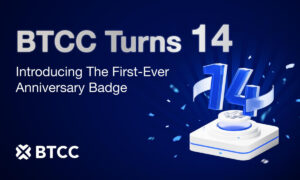Keeping customers happy is an acquired skill. Although globally 67% of people think customer service is improving, much could still be improved. For example, the average handle time for a customer service phone call should be 16 minutes, but most companies are topping 28 minutes on average, per call. There’s nothing quite like irritating hold music for 28 minutes to get you riled up.
Still, if there were ever an age-old industry tactic to keep customers sweet, it’s giving something to them. Loyalty programmes and discounts are almost overused in B2B and B2C businesses. That’s because customers are always on the hunt for a bargain. 93% of people search for and use coupons and discount codes throughout the year.
Both have their positives and negatives, but which one works best as an overall crowd-pleaser, loyalty programmes or discounts? Keep reading to find out.
Loyalty Programmes
Let’s start with some facts about loyalty programmes.
A loyalty programme aims to keep someone happy, be it a customer, employee, vendor, or distributor. It costs 20 times as much to replace a customer as it does to retain one. And, customers that feel valued engage with brands 66% more, and just a 25% increase in brand engagement equates to a 5% increase in profits – so it pays to keep customers happy.
There’s a psychological, emotional connection loyal customers have to their brands, thanks to positive reinforcement, which is an age-old psychology trick at the heart of any loyalty programme. Both a B2C and a B2B customer loyalty programme will reward for purchases, referrals and social media shares, among many others. You can tailor more loyalty programmes to suit the needs of your business.
B2B incentive programs work well if they include vendor rewards and supplier incentives, not just a programme for buyers. There’s an entire supply chain when trading B2B, and 76% of them expect a more personalised experience – something that B2B rewards can do.
Similarly, B2C brands should think about a sales force incentive promotion to drive sales through the roof and put an emphasis on customer service. Some brands already do this by offering monthly rewards for the most emails replied to, for example.
Discounts
Discounts are a fast-acting trick of the trade used to lure customers away from competitors. Discounts tap into the science of consumer buying behaviours, and that 95% of purchase decisions happen subconsciously. Think about it, if you’re in a store and comparing two products, one has a bright sale sign with a reduced price, and the other is a normal sales sticker, you’re subconsciously drawn to the discount.
Discounts don’t have to be product- or service-related. Consumers are up to 5x more likely to buy a product if there’s free shipping, for instance. They work because they’re just so appealing, but what do they do for your business? Although you’re giving away a great discount, you’re damaging your own chance at profits. Long-term discounts work against any strategical business plans because you’re always at a loss.
Products or services discounted between 10-20% can equate to a 7% increase in revenue. Anything over 20% might damage revenue. A short-term discount works well for the initial onboarding of new customers, but they should only run for a few weeks at a time.
It’s essential to find the sweet spot, reading business trends and patterns to determine when the right time to hold a sale is. Loyalty programmes work no matter what; you can sign any new customer up to one. A quarterly sale alongside an enticing loyalty programme could work really well.


































